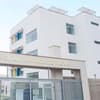Podcast
Questions and Answers
What is the definition of Intellectual Disability according to the American Association on Intellectual and Developmental Disabilities?
What is the definition of Intellectual Disability according to the American Association on Intellectual and Developmental Disabilities?
- A disability characterized by significant limitations in only adaptive behavior
- A disability characterized by significant limitations in only intellectual functioning
- A disability characterized by significant limitations both in intellectual functioning and in adaptive behavior (correct)
- A disability characterized by significant limitations in conceptual skills
At what age must Intellectual Disability originate according to the AAIDD definition?
At what age must Intellectual Disability originate according to the AAIDD definition?
- Before age 18 (correct)
- After age 25
- After age 18
- Before age 21
At what stage of development do neurodevelopmental disorders typically manifest?
At what stage of development do neurodevelopmental disorders typically manifest?
- In old age
- During adolescence
- In adulthood
- Early in development, often before the child enters grade school (correct)
What is the approximate prevalence of Intellectual Disability in the general population?
What is the approximate prevalence of Intellectual Disability in the general population?
What is the primary characteristic of intellectual disability according to the DSM-V?
What is the primary characteristic of intellectual disability according to the DSM-V?
What is the approximate prevalence of severe Intellectual Disability?
What is the approximate prevalence of severe Intellectual Disability?
What is the name of the most common form of intellectual disability that is present at birth?
What is the name of the most common form of intellectual disability that is present at birth?
Which of the following is NOT an example of a neurodevelopmental disorder in children?
Which of the following is NOT an example of a neurodevelopmental disorder in children?
What is the result of deficits in intellectual disability?
What is the result of deficits in intellectual disability?
What is the anomaly that characterizes Trisomy 21?
What is the anomaly that characterizes Trisomy 21?
What is the name of the manual that defines Intellectual Disability?
What is the name of the manual that defines Intellectual Disability?
What is the term for the limitations of learning or control of executive functions to global impairments of social skills or intelligence?
What is the term for the limitations of learning or control of executive functions to global impairments of social skills or intelligence?
What is the primary characteristic of an intellectual disability?
What is the primary characteristic of an intellectual disability?
What is the term used to describe a range of conditions that affect brain development and function, including ADHD, autism, and learning disabilities?
What is the term used to describe a range of conditions that affect brain development and function, including ADHD, autism, and learning disabilities?
What is the primary difference between a learning disability and an intellectual disability?
What is the primary difference between a learning disability and an intellectual disability?
What is an example of stereotyped or repetitive motor movements?
What is an example of stereotyped or repetitive motor movements?
What is the term used to describe a range of conditions that affect mood, thought, and behavior, including anxiety and depression?
What is the term used to describe a range of conditions that affect mood, thought, and behavior, including anxiety and depression?
What is an example of insistence on sameness?
What is an example of insistence on sameness?
What is the primary purpose of the DSM-5 in relation to neurodevelopmental disorders?
What is the primary purpose of the DSM-5 in relation to neurodevelopmental disorders?
What is an example of highly restricted, fixated interests?
What is an example of highly restricted, fixated interests?
When must symptoms of Autism Spectrum Disorder be present?
When must symptoms of Autism Spectrum Disorder be present?
What is an example of hyper-reactivity to sensory input?
What is an example of hyper-reactivity to sensory input?
Where was the information about Autism Spectrum Disorder adapted from?
Where was the information about Autism Spectrum Disorder adapted from?
What is the primary focus of Positive Behavioral Intervention and Support?
What is the primary focus of Positive Behavioral Intervention and Support?
What is the definition of Learning Disabilities according to the Individuals with Disabilities Education Act (IDEA)?
What is the definition of Learning Disabilities according to the Individuals with Disabilities Education Act (IDEA)?
At what stage are the signs and symptoms of learning disabilities most often diagnosed?
At what stage are the signs and symptoms of learning disabilities most often diagnosed?
What percentage of students between six and seventeen years of age are identified as learning disabled according to US Government figures?
What percentage of students between six and seventeen years of age are identified as learning disabled according to US Government figures?
Why do some individuals with learning disabilities may never receive an evaluation?
Why do some individuals with learning disabilities may never receive an evaluation?
What is a common consequence for individuals with undiagnosed learning disabilities?
What is a common consequence for individuals with undiagnosed learning disabilities?
Study Notes
Intellectual Disability
- Defined by the American Association on Intellectual and Developmental Disabilities (AAIDD) as a disability characterized by significant limitations in both intellectual functioning and adaptive behavior.
- Originates before age 18, and involves problems in adaptive behavior, not just intellectual functioning.
- Intellectual functioning and adaptive behavior can be improved.
Prevalence of Intellectual Disability
- Overall general population prevalence: approximately 1%.
- Prevalence for severe intellectual disability: approximately 6 per 1,000.
Classifications of Intellectual Disability
- Table adapted from: https://www.ncbi.nlm.nih.gov/books/NBK332877/
- Example: Trisomy 21 (Down Syndrome) - an anomaly at the 21st pair of chromosomes.
Positive Behavioral Intervention and Support
- Systemic use of the science of behavior to support desirable behavior.
- Positive reinforcement (rewarding) procedures to support a student's appropriate behavior.
Learning Disabilities
- Defined by the Individuals with Disabilities Education Act (IDEA) as a disorder in one or more basic psychological processes involved in understanding or using language.
- May manifest in an imperfect ability to listen, think, speak, read, write, spell, or do mathematical calculations.
- Often diagnosed during school years, but some individuals may not receive an evaluation until post-secondary education or adulthood.
Prevalence of Learning Disabilities
- Public schools have identified between 5% to 6% of students between six and seventeen years of age as learning disabled.
Autism Spectrum Disorder
- Symptoms must be present in the early developmental period.
- Characteristics include:
- Stereotyped or repetitive motor movements, use of objects, or speech.
- Insistence on sameness, inflexible adherence to routines, or ritualized patterns of verbal or nonverbal behavior.
- Highly restricted, fixated interests that are abnormal in intensity or focus.
- Hyper- or hypo-reactivity to sensory input or unusual interest in sensory aspects of the environment.
- Level of severity classified by the DSM-V.
Neurodevelopmental Disorders
- Examples include intellectual disability, attention-deficit/hyperactivity disorder (ADHD), autism, learning disabilities, conduct disorders, cerebral palsy, and impairments in vision and hearing.
- Typically manifest early in development, often before the child enters grade school.
- Characterized by developmental deficits that produce impairments of personal, social, academic, or occupational functioning.
Studying That Suits You
Use AI to generate personalized quizzes and flashcards to suit your learning preferences.
Description
This quiz covers the characteristics and examples of neurodevelopmental disorders in children, including intellectual disability and other impairments of personal, social, academic or occupational functioning. Learn about the different types of developmental deficits and how they affect children. Test your knowledge and understanding of these disorders.





